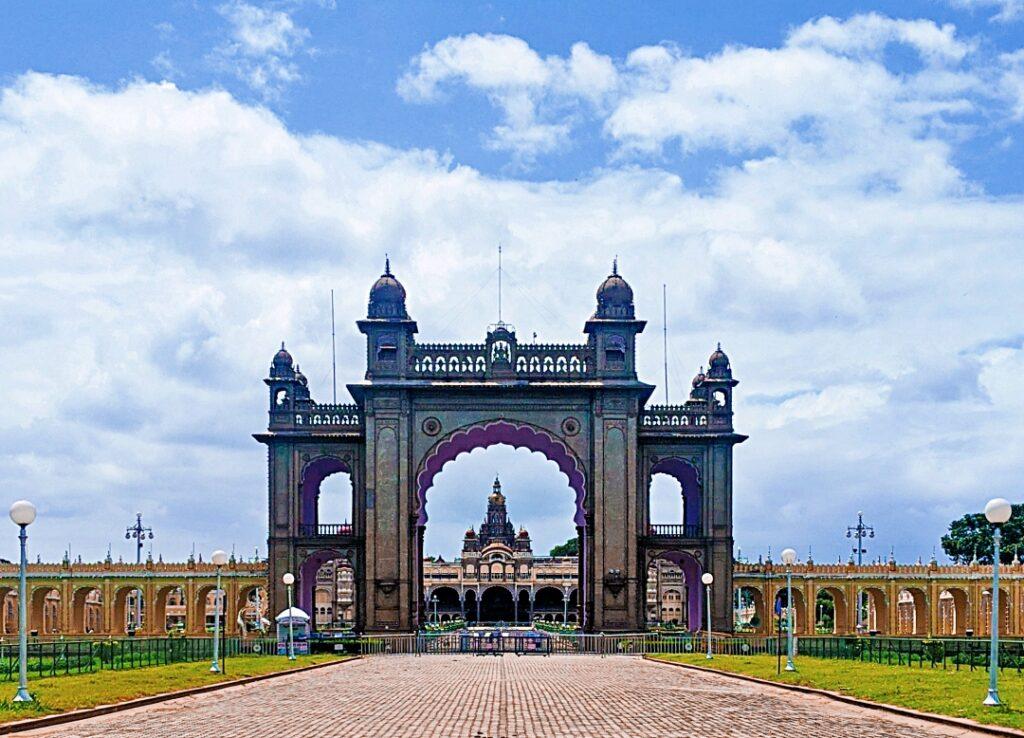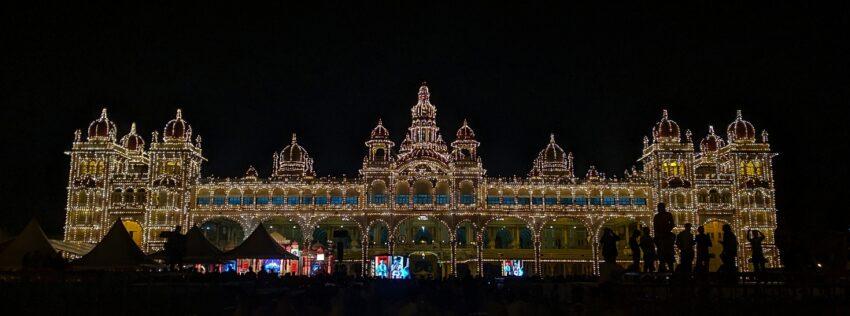The Mysore Palace, also known as Amba Vilas Palace, is a historical palace and the royal residence at Mysore. It is the official residence of the Wodeyar dynasty and the seat of the Kingdom of Mysore.
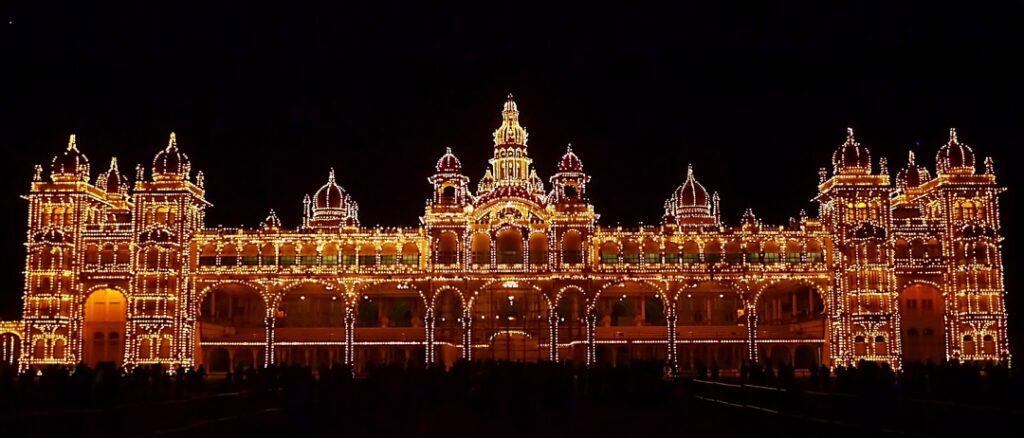
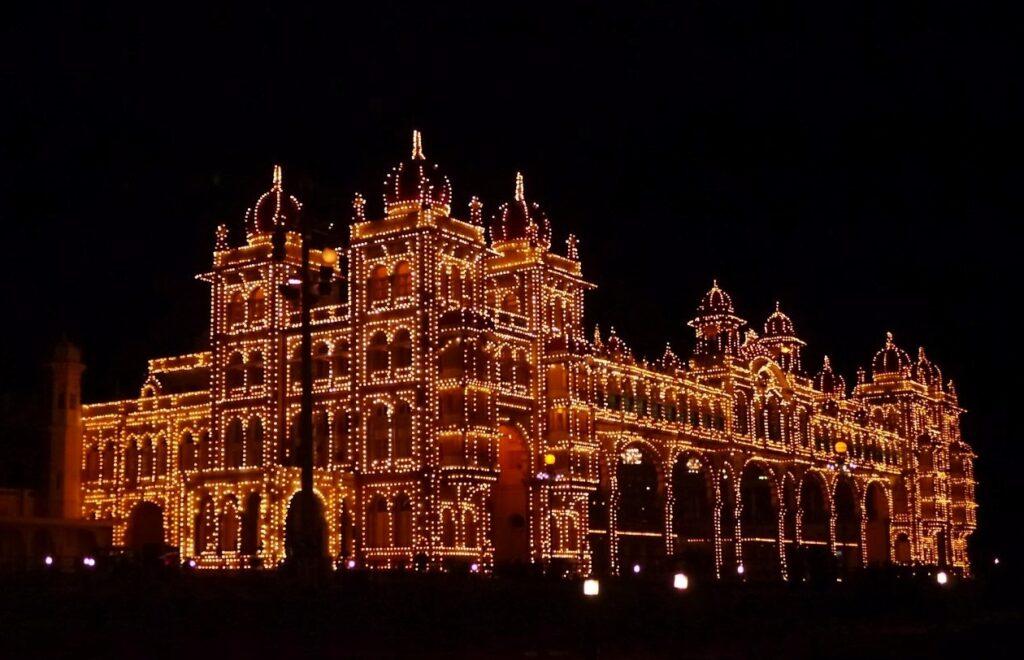
The palace is the prime attraction of Mysore. Mysore is commonly described as the ‘City of Palaces’, and there are seven palaces including this one; however, ‘Mysore Palace’ or ‘Amba Vilas Palace’ refers specifically to this one.
The Mysore palace is now a museum, where the paintings, royal apparel, and ornaments, can be witnessed in all their splendor. The Durbar hall has an exquisite ceiling and pillars painted with gold and blue.
Amba Vilas palace exhibits an Indo-Saracenic style of architecture on the outside, but a distinctly Hoysala style in the interior.



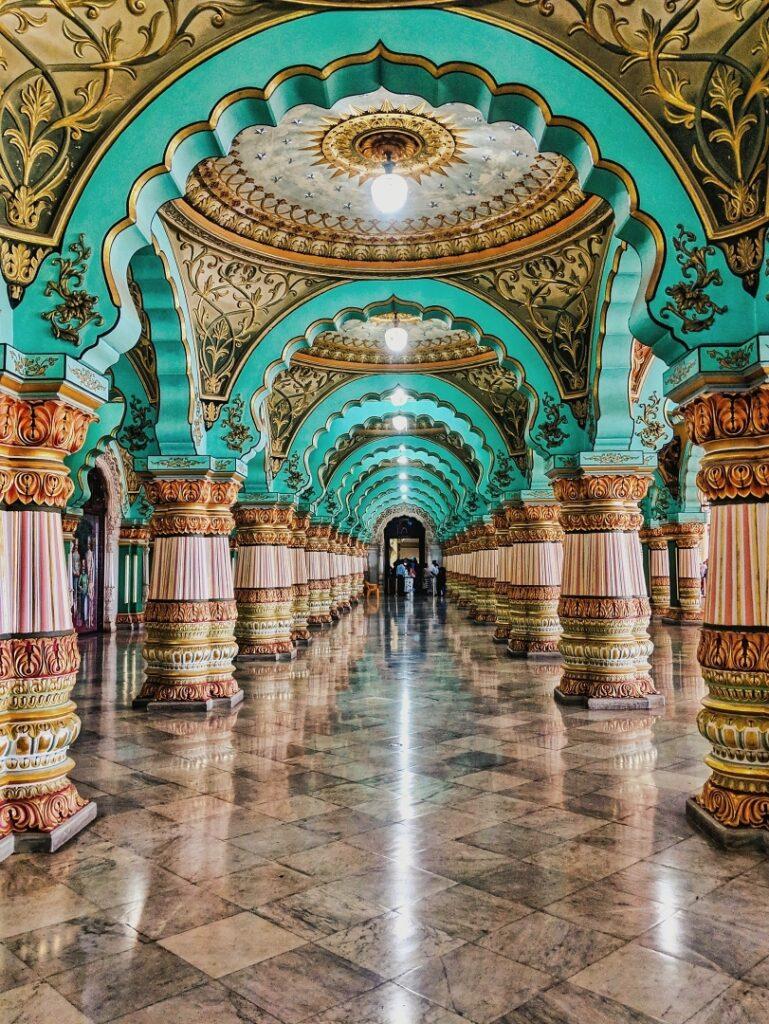
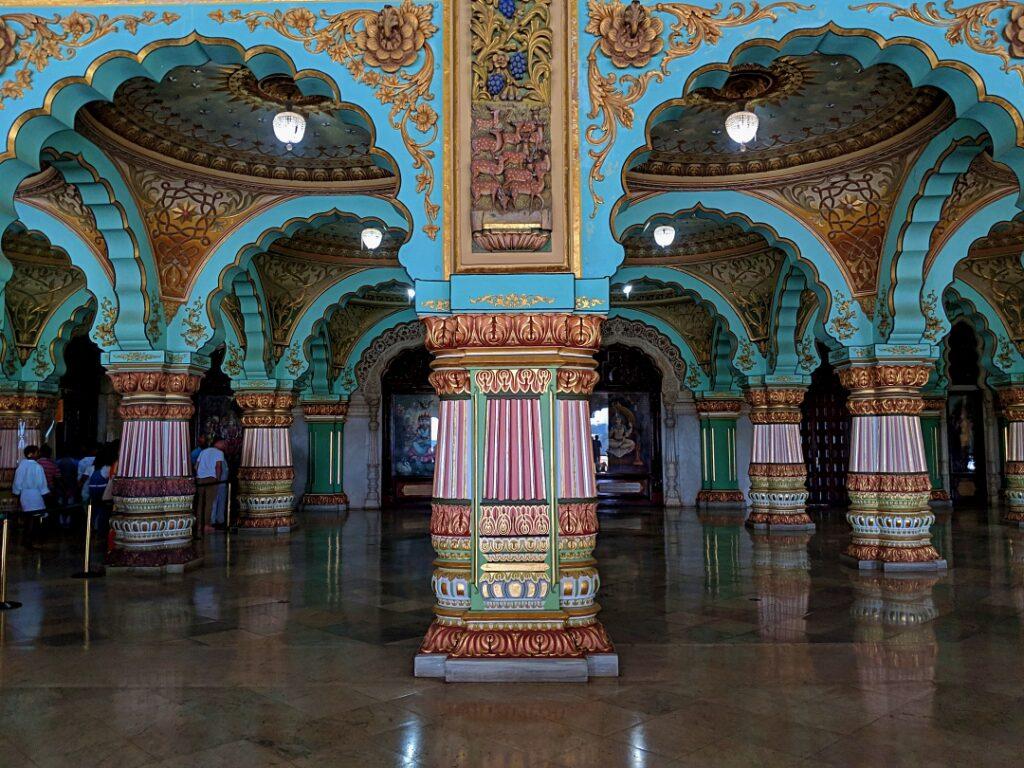
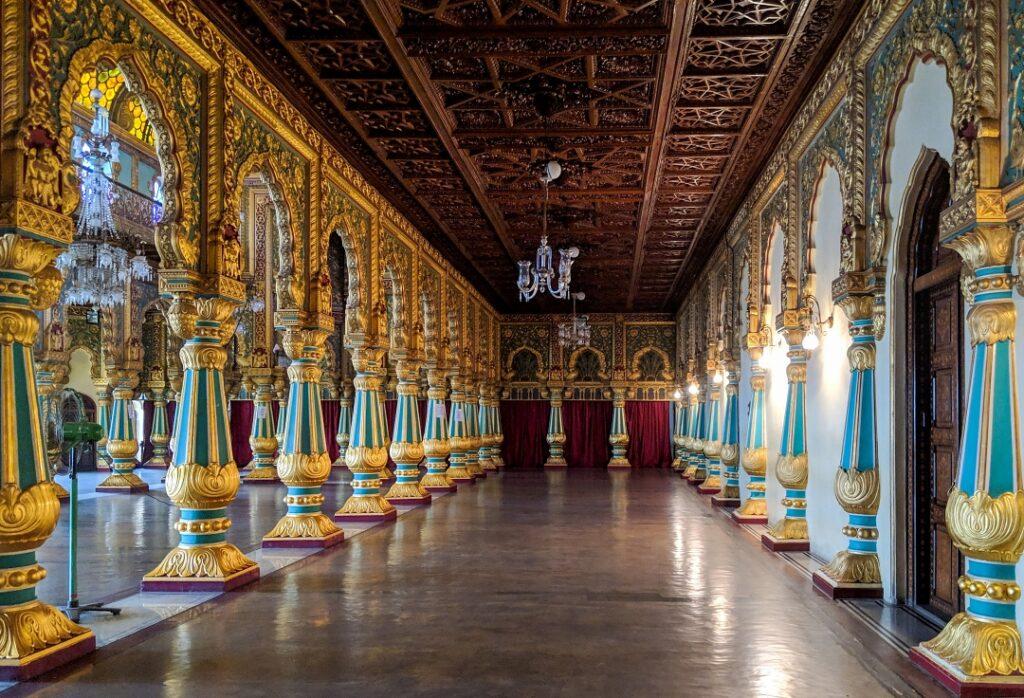
The elevation is intricately detailed with slightly carved arches, canopies, slender columned colonnades, marble frames and pillars, stained glass, durbar halls, fine carvings of birds, foliage, and animals in Hoysala style.
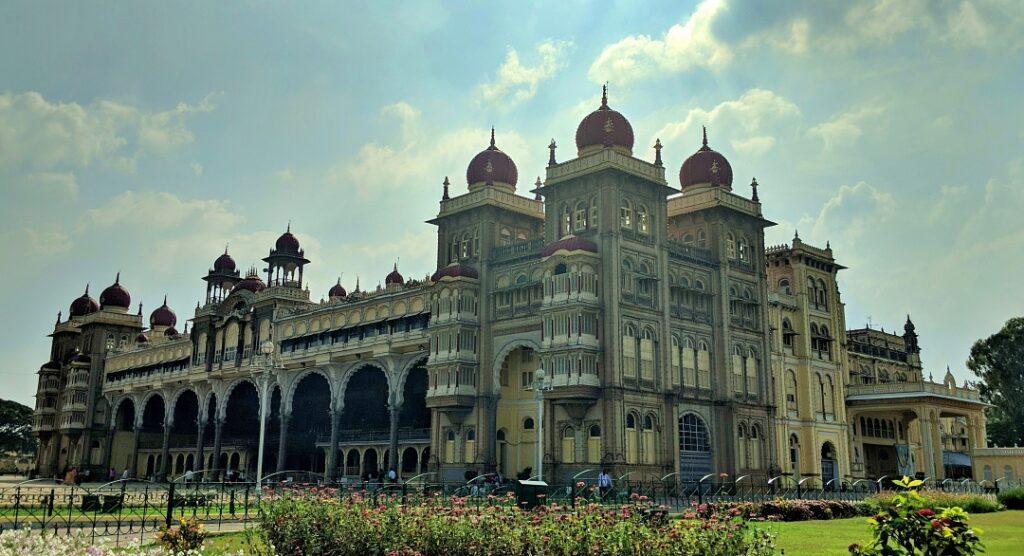

The site where Mysore Palace now stands was occupied by a village named Puragere at the beginning of the 16th century. A fort was constructed in 1524 by Chamaraja Wodeyar III, who passed on the dominion of Puragere to his son Chamaraja Wodeyar IV. The old palace inside this fort was burnt in 1896. The current structure was constructed between 1897 and 1912. Maharaja Krishnaraja Wodeyar IV and his mother Maharani Kempananjammanni Devi, commissioned the British architect Henry Irwin to build a new palace.
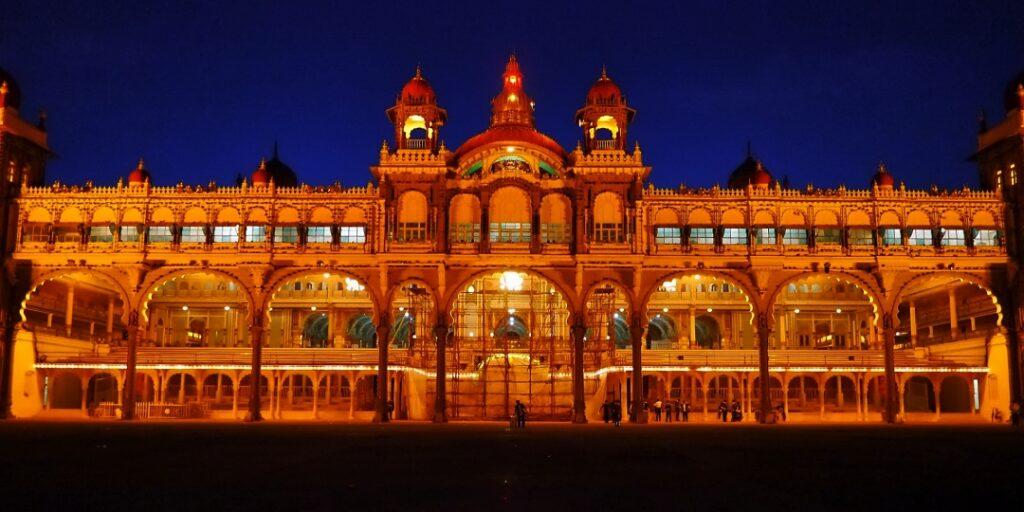
Mysore Palace is now one of the most famous tourist attractions in India, after the Taj Mahal, with more than 6 million annual visitors.
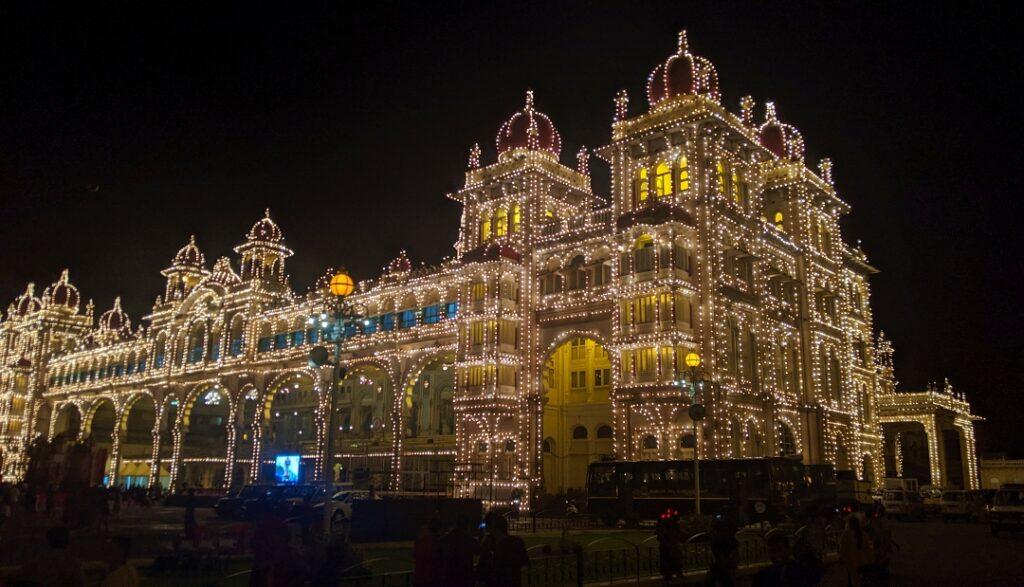
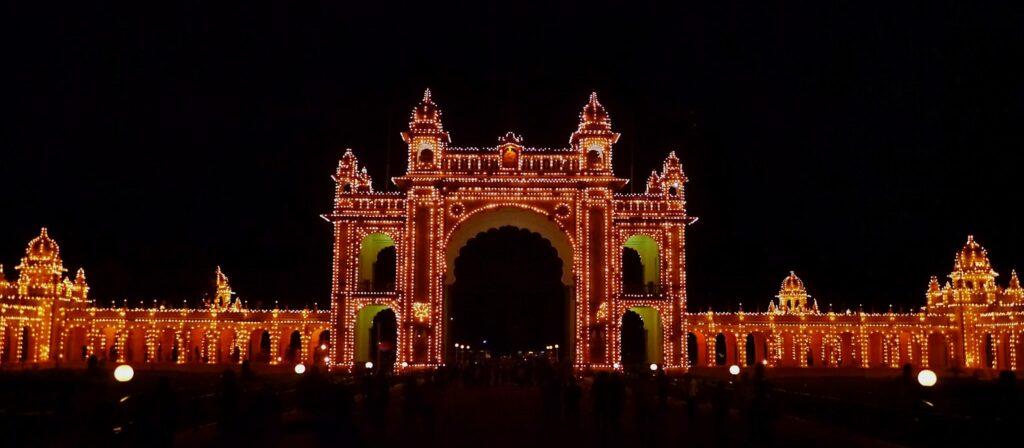
The architectural style of domes of the palace is commonly described as Indo-Saracenic, with blends of the Hindu, Mughal, Rajput, and Gothic styles. It is a three-storey stone structure with marble domes, and has a 145-foot five-storey tower. The palace is surrounded by a large garden. The entrance gate and arch hold the emblem and coat of arms of the kingdom of Mysore, around which the kingdom’s motto is written in Sanskrit : “न बिभॆति कदाचन” (never terrified).
